Ceilings are called the forgotten third surface. Some even argue over that assertion. “No, it’s the forgotten sixth surface.” “No,” say still others, “It’s the fifth wall!” We get it. Before we got into the ceiling business, we never looked up. (Now, of course, that’s the first thing we do.) Consciously or not, however, no one can escape the impact of a room’s ceiling construction. Height, the sense of volume, color, texture, and geometry are big parts of that impact—as are the ceiling’s acoustics.
What is an acoustic ceiling?
A suspended acoustic ceiling is a secondary ceiling, hung below the structural ceiling both to treat room acoustics and to look attractive. Suspended ceilings have the added advantage of hiding the mechanical, electrical, and plumbing installations from view while maintaining some level of access to these utilities. This article will explain the wide range of suspended acoustical ceiling types, with a focus on the acoustic characteristics rather than access, installation, or cost.
An interior design lacking acoustical forethought is a rare commercial project today. Unlike walls, ceilings do not reflect sound directly to our hearing, since our ears are oriented on our heads vertically, not horizontally (at least for most of us). Technically, this is an oblique surface to hearing. But ceilings have several things going for them when it comes to sound control, especially in commercial buildings.
- Ears: In most commercial spaces, the ceiling is closer to our ears than walls; treating it helps hearing.
- Surfaces: The ceiling plane is the simplest surface to treat acoustically without compromising design.
- Lows: You can load the back of a suspended ceiling with thick, soft absorptive materials along with air space to treat low bass frequencies. It’s hard to use thick absorptive materials on walls, especially soft materials, and still look and function well.
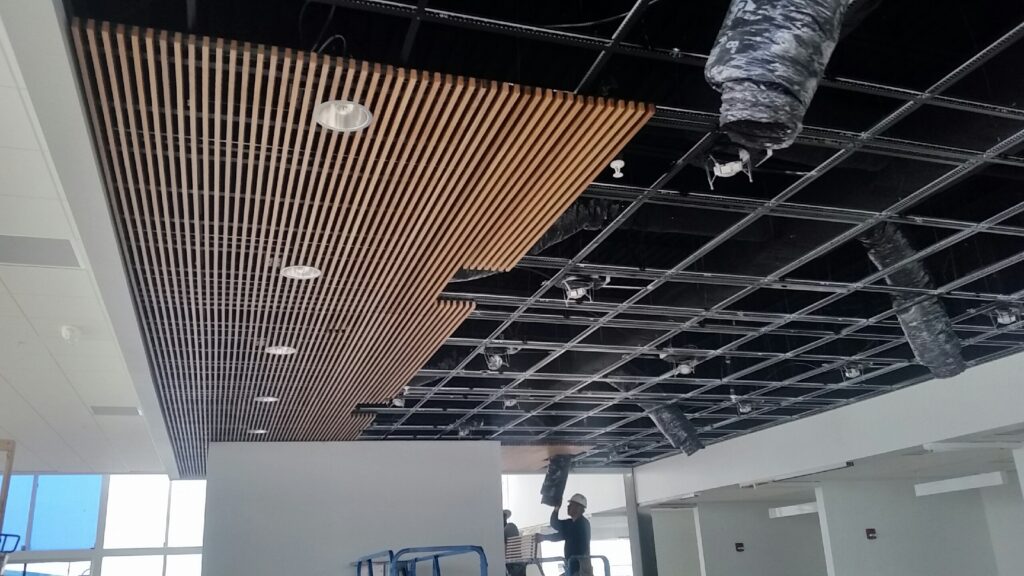
How do suspended acoustic ceilings affect sound performance?
Suspended acoustic ceilings, then, are installed for one purpose, or a combination of acoustical purposes (here slightly oversimplified).
- Sound absorption: Wave energy is taken in when an absorbing material encounters sound; part of the energy is transformed into heat and part of it is transmitted through the material.
- Sound reflection: Wave energy bounces back when it strikes a material; part of the energy bounces back directly and part of it indirectly as reverberation.
- Sound diffusion: Wave energy bounces back evenly in a room. In a perfectly diffusive sound, space reverberation times are the same at any listening position.
Room acoustics is a science and an art. The complex physics—and opposing opinions—behind room acoustics is beyond this article. However, since the bulk of questions we get about acoustics focus on sound absorption, we’ll discuss the types of suspended acoustic ceilings from that angle.
What materials are used for suspended acoustic ceilings?
In the zodiac of acoustic ceiling products, it helps to break the topic into three classifications: materials, shapes, and colors/textures. The MATERIALS used for suspended acoustic ceilings fall into Five Main Groups:
- Mineral Fiber
- Fiberglass
- Metal
- Wood
- Specialty materials
You can think of acoustical ceiling materials as consisting of two parts: a “face” (visual architectural surface) and a “body” (sound-absorbing materials).
The “body” part of sound absorption falls into two broad material types: mineral fibers and glass fibers. These fiber types are doing all the heavy lifting in commercial acoustics today. They work this way: when the ordered movement of air molecules (sound) strikes microscopic fibers, they turn into disordered movement (heat) and the effect is absorbed sound. Other acoustic materials such as open-cell foams, cotton, and carbon fibers are used in special situations, like sound studios. These are expensive and not used widely in commercial suspended ceilings.
If acoustical consultants are interested in the “body,” designers are interested in the “face,” the surfaces put in front of the sound-absorbing materials. They come in all varieties within the Big Five.
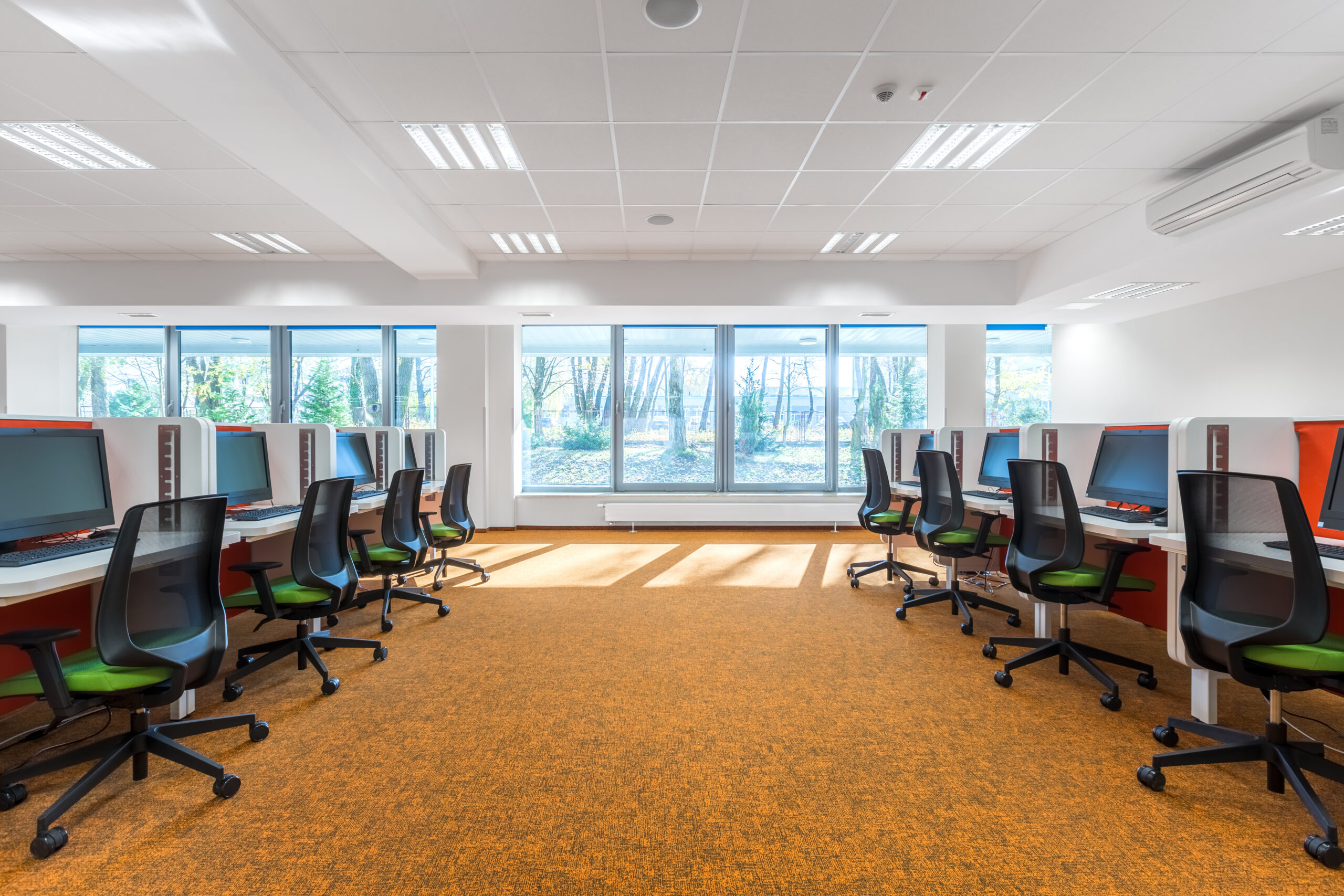
Mineral Fibers typically sell as fissured suspended ceiling tiles. They are the entry-level product in terms of price and performance and remain the most mass-produced type of suspended acoustic ceiling product. They are perfectly suitable for many environments, including offices and retail spaces. They are made from a blend of mineral fibers, perlite, clay, and even recycled newsprint.
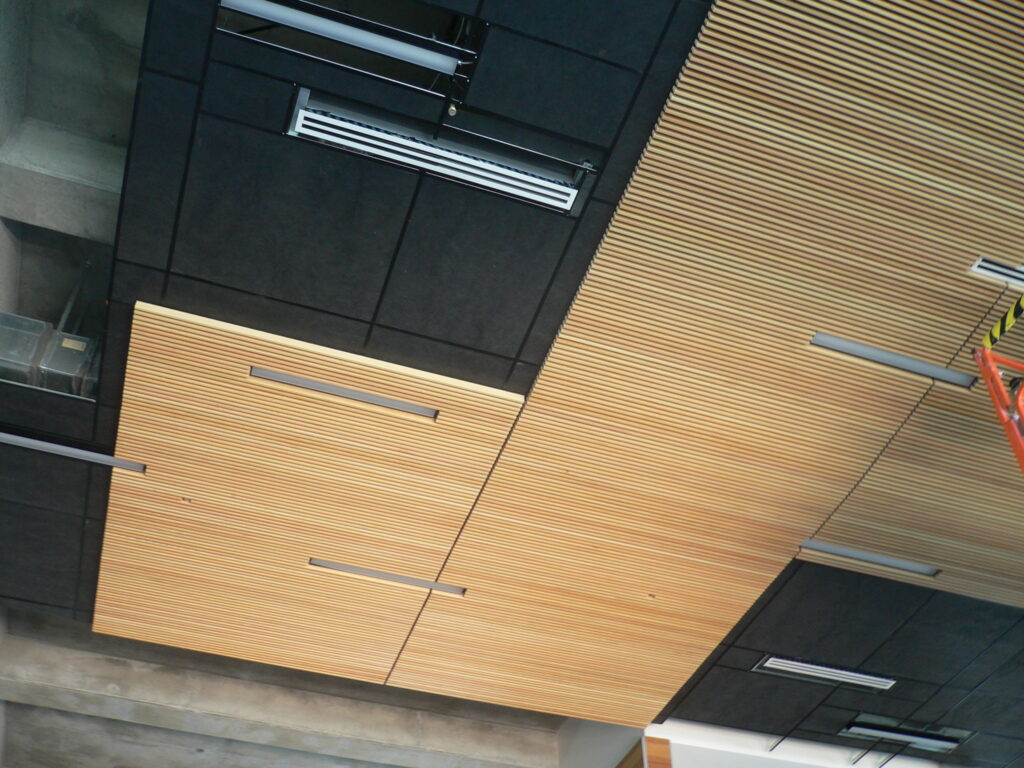
Faced Fiberglass panels come in a variety of products.
- Polyurethane or PVC bagged fiberglass is sometimes used directly as “faces,” though rarely for public spaces. They are most often placed behind, in the role of absorptive “body.”
- Woven fabric is wrapped around rigid fiberglass panels and offers designers a rich color pallet.
- Painted PVC faced fiberglass (known as Nubby) and latex faced fiberglass simulate the look of painted drywall.
- Special acoustic plasters are also used to face fiberglass panels. Once installed, the panel edges are filled and coated with acoustic plaster. The effect is a drywall or plaster look, but with acoustic properties.
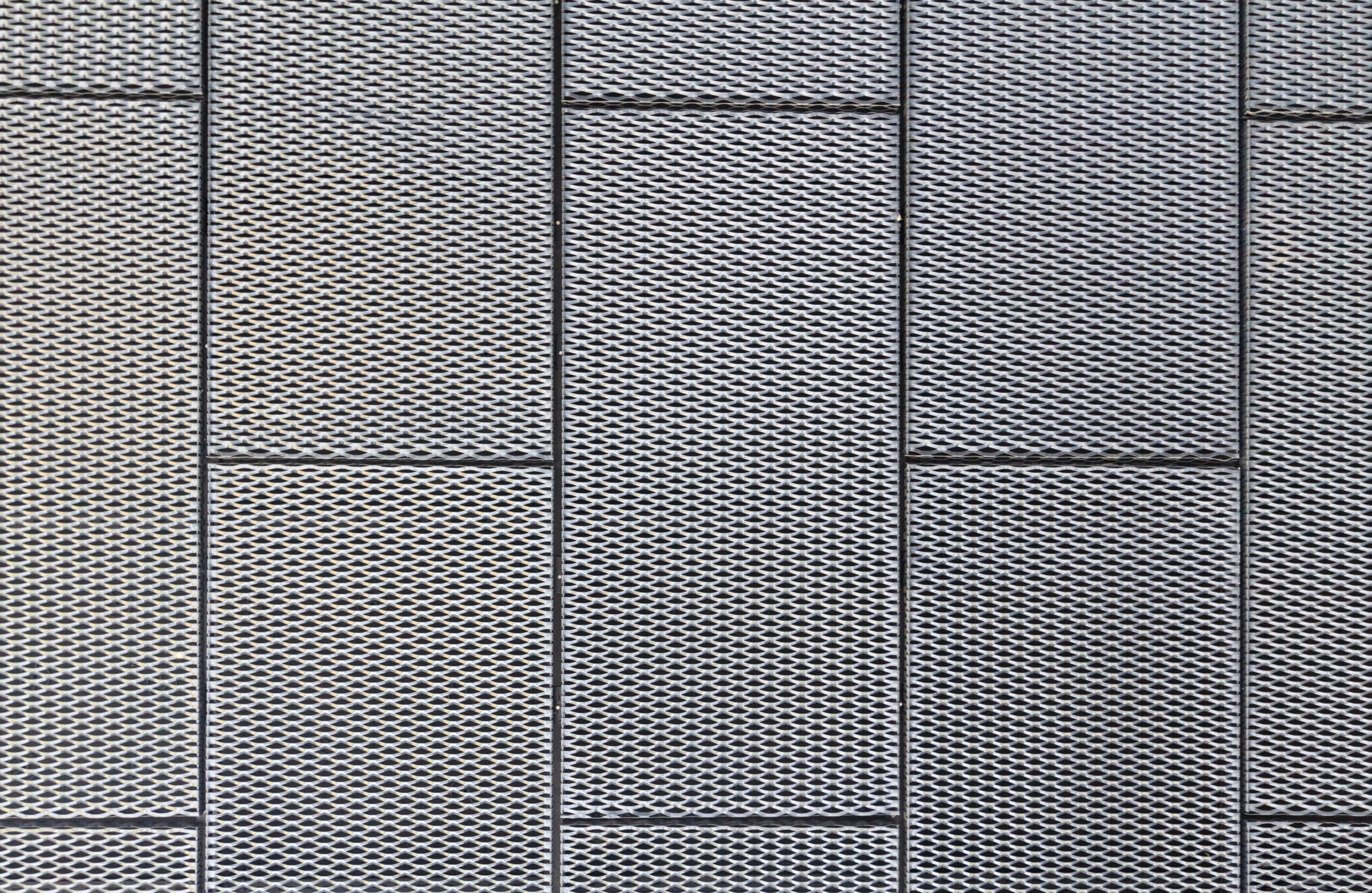
Metal:
Metals used in ceilings are typically aluminum, with a big effort put into recycling. Panned ceilings are made of tin and other alloys.
Wood gives designers hundreds of species to select from, though less than 100 are used commercially—and of those, less than 20 are used regularly in commercial ceilings.
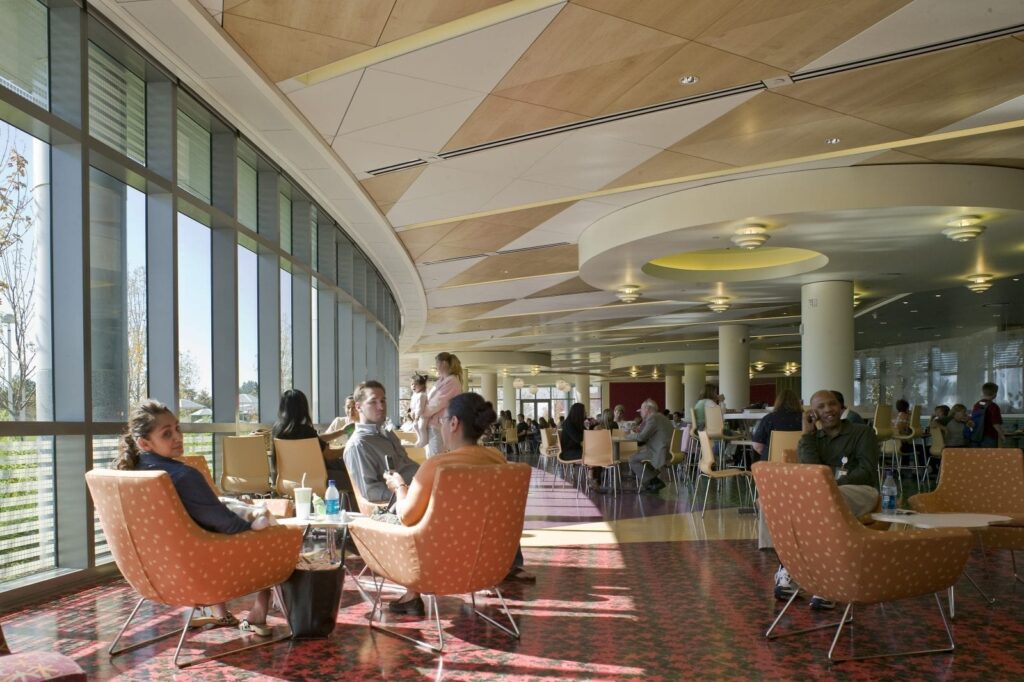
Specialty Materials hold their place in both the designer’s and acoustician’s pallet. Space permits only a passing explanation:
- Cementitious wood fiber: Fine wood fibers cemented together into an aerated acoustic pad.
- Reinforced Gypsum tiles (GFRG): Like wood or metal, the density of Glass Fiber Reinforced Gypsum requires holes to make them.
- Polyethylene felts: Made from recycled bottles, these plastic felts share the acoustics of fiberglass, and come in a variety of colors.
- PVC stretch materials: These elastic films stretch across a bay or an entire ceiling. Fiberglass can be placed behind to improve acoustics, or the PVC films can be micro-perforated.
- Acoustic foams: Made of urethane and melamine plastics, open and closed cell construction provides acousticians different sound attenuation properties. Some can be painted.
What shapes are used by designers?
All these materials can be configured into different SHAPES for a suspended acoustic ceiling, though not in equal degrees. Each material has its own properties that limit how it can be formed. Shapes fall into Five Patterns:
- Tiles (horizontally oriented panels)
- Linear (horizontally oriented planks)
- Grille & Baffle (vertically oriented planks)
- Cube (intersecting vertically oriented planks)
- Special shapes: Curved (concave and convex), radiused, serpentine, interwoven, pyramid, and 3D forms)
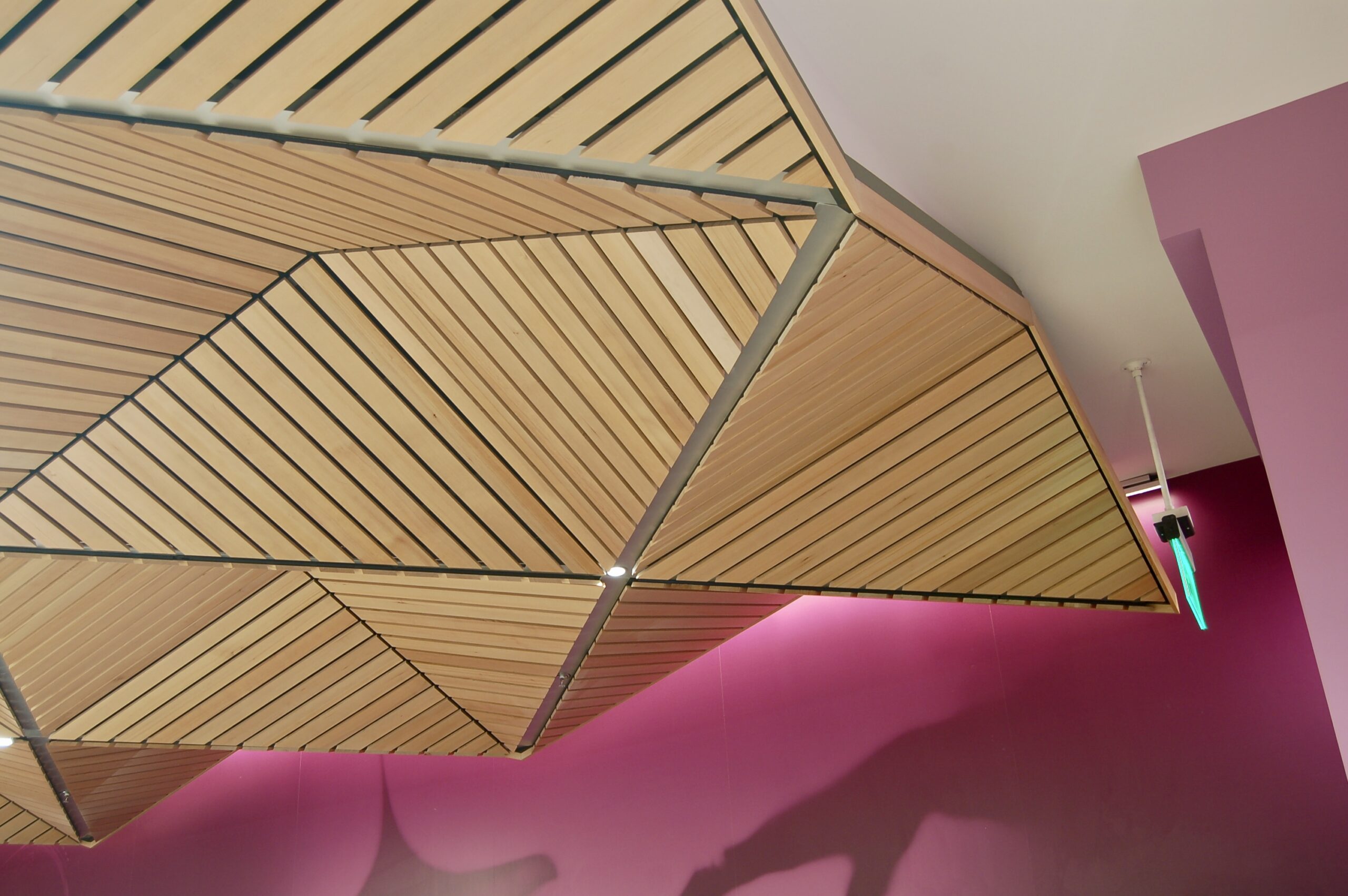
These shapes can all be suspended in the ceiling plane and can serve not just to absorb sound. Some ceiling types can also attenuate sound by diffusing or reflecting it depending on the shape.
Comparing suspended wood ceiling options.
Which materials can be formed into what shape? Here’s an overly simple, but hopefully useful, matrix:
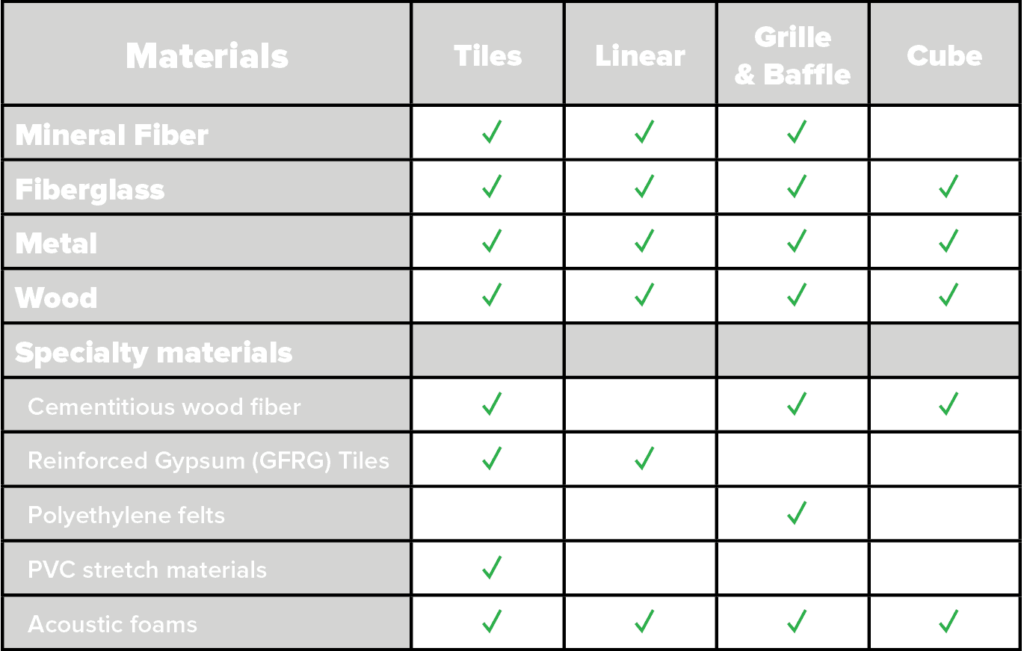
COLOR and TEXTURE is a third way to classify different suspended acoustic ceiling types. Acoustic Ceiling Tiles (ACT) are typically white to help with light reflection and cost. Other materials, like metal and fabric, use solid colors at various sheen levels, from matte to high gloss. Wood shows the organic hues and textures of different species, with stains used to enhance grains and smooth out sharp color variations within a piece of wood. Some metal ceilings laminate wood veneers to make a composite material. Still, other metal ceilings print and paint faux wood grains. Cementitious wood fiber looks something like colored steel wool. Polyethylene felt mimics the texture of wool felt.
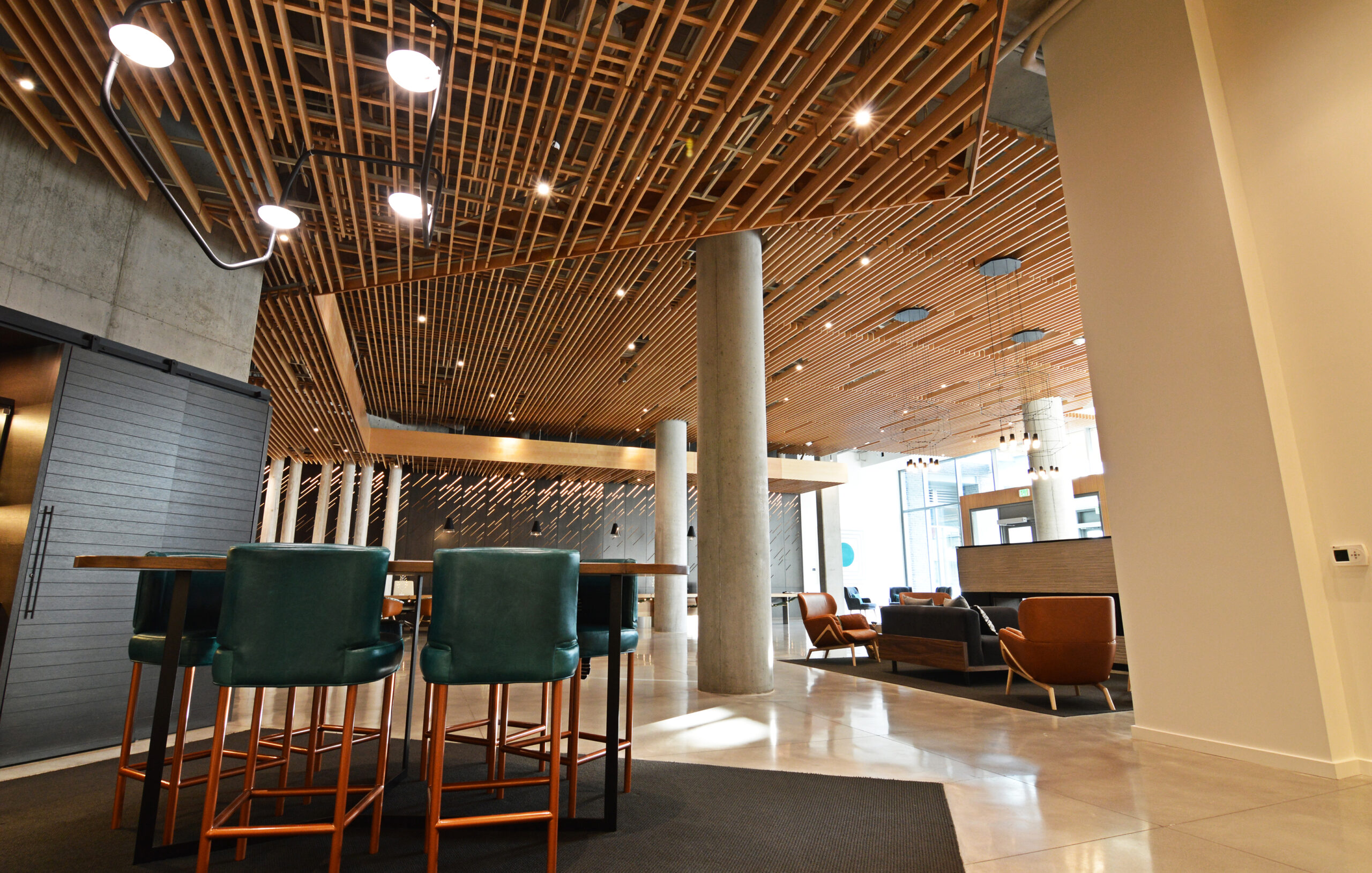
Major considerations for designers.
Finally, besides ease of access, installation and costs mentioned in the first paragraph, there can be additional things to consider when learning about suspended acoustic ceiling types:
- Evaluating Acoustics quantitatively: The Noise Reduction Coefficient (NRC) measures sound absorption. It is the result of an ASTM acoustic test that meters the sound energy absorbed when striking a material’s surface. The amount of sound soaked up is measured at four different frequencies. An NRC of 1 indicates perfect absorption; an NRC of 0 indicates perfect reflection.
To be fair, an Acoustical Consultant will say NRC is a crude tool, more a hint of a product’s acoustic character than a true measure. But this measure is always the starting point when considering the properties of various acoustic ceilings.
Some would also say that the Ceiling Attenuation Class (CAC), which measures sound insulation from noise entering the room through the ceiling, is also important. CAC comes into play in office ceiling construction where office partitions don’t extend above the ceiling, resulting in shared plenums that leak noise. That’s not the kind of construction where specialty acoustic ceilings types are typically found but can be important for ACT (Acoustic Ceiling Tiles).
- Fire Rating: Code requires either sprinklers or class 1(A) flame spread materials above a suspended ceiling. Because of this universal requirement, most acoustical ceiling products comply; but it’s always good to check.
- Sustainability: Extractive and petrochemical-based products attempt as best they can to use recycled materials. These include plastics, aluminum, and minerals. Organic-based materials like cotton fiber and wood-based products replenish themselves naturally.
- Costs: Since costs vary dramatically within a product family, we’ll use a relative dollar range, understanding these are only general indicators.
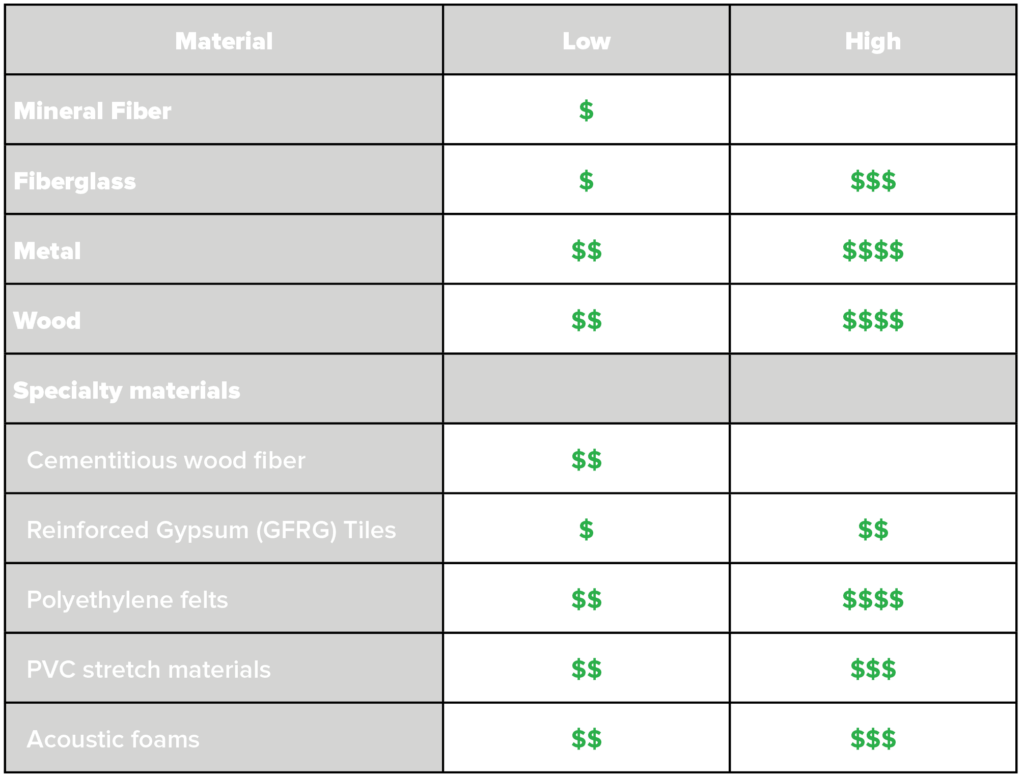
This article clearly has only touched this subject in brief. At a minimum, we hope it conveys the wide product spectrum available for different types of suspended acoustical ceiling finishes, both standard, and specialty. This “Fifth Wall” is a canvas waiting to paint on, a surface ready for acoustic treatment.
Want to talk more about suspended wood ceilings?

 Don’t forget the crackers! We use cookies to offer you a better site experience and to analyze site traffic. Read about how we use cookies in our
Don’t forget the crackers! We use cookies to offer you a better site experience and to analyze site traffic. Read about how we use cookies in our